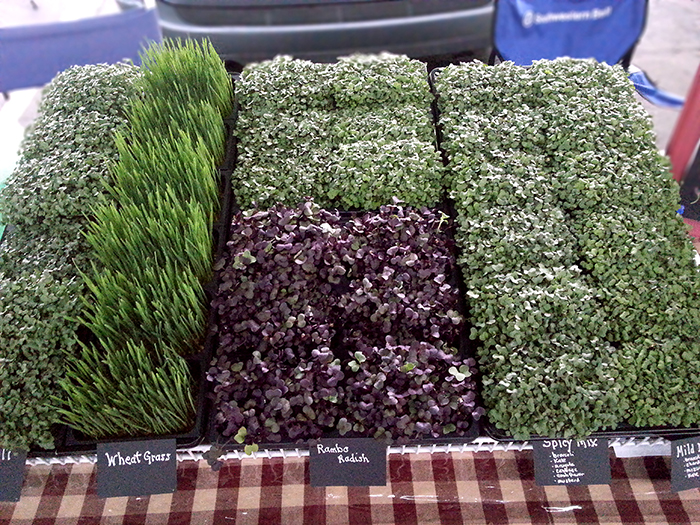Microgreens Can Boost Your Food
Author: Loralie Tangen
 Good Health. If you have it, you might take it for granted. If you don’t, it may become one of your highest priorities. We know that proper nutrition is a foundation of good health. Still, different opinions abound as to what exactly comprises “good nutrition.” One particular food group seems to enjoy widespread approval across various diet trends. As you may have guessed, that group is vegetables.
Good Health. If you have it, you might take it for granted. If you don’t, it may become one of your highest priorities. We know that proper nutrition is a foundation of good health. Still, different opinions abound as to what exactly comprises “good nutrition.” One particular food group seems to enjoy widespread approval across various diet trends. As you may have guessed, that group is vegetables.
I’ve always been told to eat more leafy greens and cruciferous vegetables like broccoli, kale, cabbage, etc. Translating this knowledge from my head onto my plate can be a challenge. Our culture is one of convenience, and preparing vegetables and salads is more work than grabbing a sandwich or a pizza. Also, I have to confess that I’m not too fond of the taste of most vegetables. I want to like kale. I know it is super nutritious, but I find it tough and bitter. Friends say I should massage it with olive oil first. That’s not going to happen in my kitchen!
I believe that food is powerful for good health, so I am working on incorporating more vegetables into my family’s diet. When I learned that microgreens had higher levels of nutrients ounce for ounce than fully grown vegetables, I knew I wanted to try them (1).
So what are microgreens?
Microgreens are very young (usually 7 to 10 days of growth from seed), vegetable greens. They are grown longer than sprouts, and only the stem and leaf are consumed (unlike sprouts where the seed, root, stem, and immature leaf are eaten). Because they are harvested after a week or so, many seeds are grown close together in a container. Common varieties are broccoli, kale, kohlrabi, sunflower, pea shoots, red cabbage, arugula, radish, and mixes of multiple varieties. One mix might give you six different vegetables at once! The taste is usually mild compared to the full-grown vegetable, but some, like radish, do have a little kick.
An added benefit of microgreens is versatility. You can add them to salads (or they can be a salad on their own), sandwiches, wraps, stir fry, smoothies, omelets, tacos, burgers, crackers with goat cheese and pizza. They serve as a great topping to fish, soups, bowls, or any entrée. Adding microgreens to whatever you are eating instantly makes that dish more nutritious. If you are trying to get your kids to eat more vegetables, you can entice them with smaller servings since microgreens are so nutrient-dense. Plus, they are easier to sneak into meals since they don’t look like grown-up vegetables!
In my area, microgreens were not available in any grocery store, so I started growing, selling, and educating at a local farmer’s market. They are becoming more available in grocery stores. Your best bet is to check the local farmer’s market or grow your own since you can grow them in a petite space year-round.
Loralie Tangen has been an avid gardener forever. She has been a food educator through the Master Food Volunteer program with K-State Extension since 2010. Food Life Joy began as a blog to share information about gardening, health, and food while saving money on both. Loralie is especially interested in unusual food varieties and passionate about local food and nutrition. After studying microgreens and trying them at her own family’s table, she decided that she wanted more people to know about and experience this new superfood. What started as a hobby several years ago has now led to a business.
Learn more at www.foodlifejoy.com





